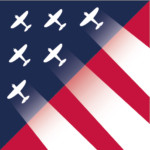Independence Day Celebration! – Grumman F7F Tigercat Flight Demonstration
Independence Day Celebration! Grumman F7F Tigercat Flight Demonstration Friday, July 4th—All Day Museum Open 10am to 5pm
History Presentation and Flight Demonstration From Zero to Hero The SB2C Helldiver Saturday July 19, 2025
Late in WWII the Curtiss SB2 Helldiver dive bomber sent Japanese warships to the bottom of the ocean and pulverized fortifications on Japan’s home islands.
History Presentation and Flight Demonstration Paul “Pappy” Gunn An Unlikely Hero of the Pacific Air War Saturday, May 17th 2025
According to General George Kenney, McArthur’s air commander in the Southwest Pacific, “Pappy” Gunn played a key role in the success of the 5th Air Force during WWII. Kenney said of Gunn, “He was a gadgeteer par excellence”.
History Presentation and Flight Demonstration Escort Carriers—Small Ships with Big Impact Saturday, April 12
Of the 151 aircraft carriers built in the U.S. during World War II, 122 were escort carriers. The escort carrier, carrying the U.S. Navy hull designator CVE, was a small and slower type of aircraft carrier used by the
History Presentation and Book Signing Bombing Hitler’s Hometown The 15th Air Force’s Last Big Mission of the European War Saturday March 15th 2025
One of the final missions of the air war over Europe was the April 25th, 1945, bombing of Linz, Austria by elements of the 15th Air Force flying from bases in southern Italy.
History Presentation Davey “Tokyo” Jones—The Doolittle Raid and the “Great Escape” Prison Camp Saturday, February 22, 2025
History Presentation Davey “Tokyo” Jones—The Doolittle Raid and the “Great Escape” Prison Camp Saturday, February 22, 2025 Doors Open at 9:00am Presentation Starts at 10:00am In response to the Japanese December 7, 1941, attack on Hawaii and the Philippines, President Franklin Roosevelt directed that
Air Support for Special Forces Operations in Burma The Chindits, the 1st Air Commando Group and Operation Thursday Saturday, January 18
Doors Open at 9am Presentation Begins at 10am The China-Burma-India Theater (CBI) was “the forgotten war” of WWII, but Burma was the linchpin of the war in the Far East. The invasion of Burma gave Japan a launching point for its
History Presentation The Arsenal of Democracy Saturday, December 14th
On Saturday, December 14th, at 10:00 a.m., Lead Docent Les Doggrell will present the story of “The Arsenal of Democracy” – how U.S. industry in cooperation with the federal government armed and supplied both the U.S. and its Allies
History Presentation Operation Dragoon – A Second D-day in France Saturday, November 16, 2024
Operation Dragoon, the highly successful August 1944 invasion of southern France, was one of the largest amphibious landings of WWII. But it was overshadowed by Operation Overlord, the invasion of Normandy, which was launched two months earlier in June
History Presentation and F3A Flight Demo VMF-214 – Greg Boyington
VMF-214 – Greg Boyington and The Black Sheep Squadron in the Pacific Saturday, October 12th Doors Open at 8am - Presentation Begins at 9am

